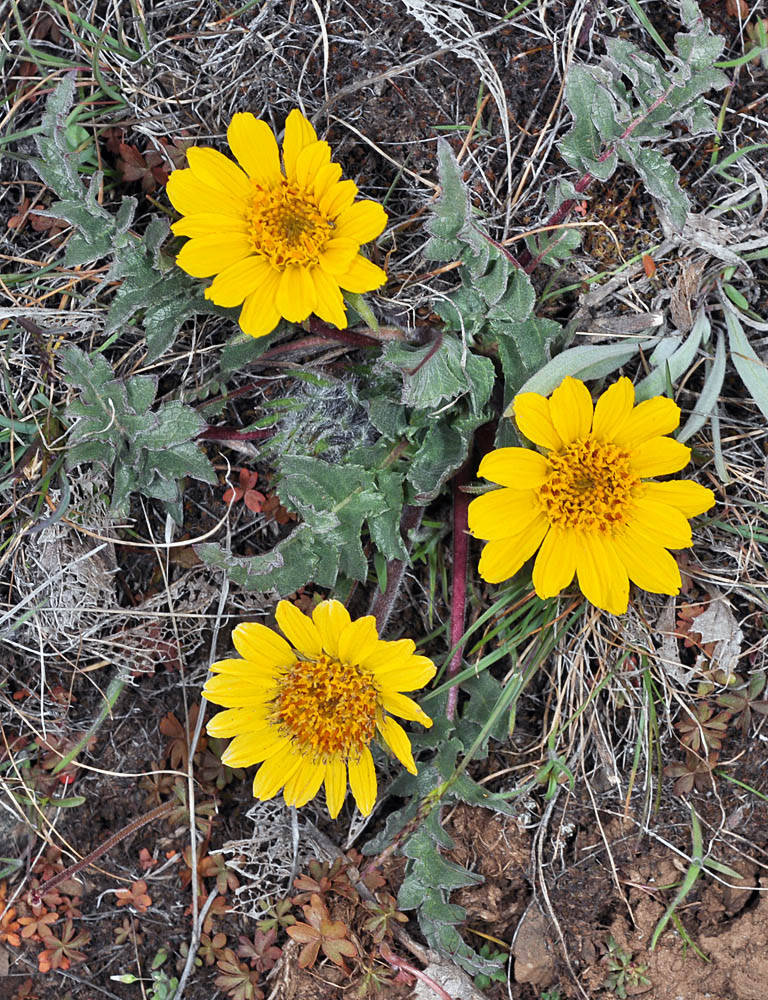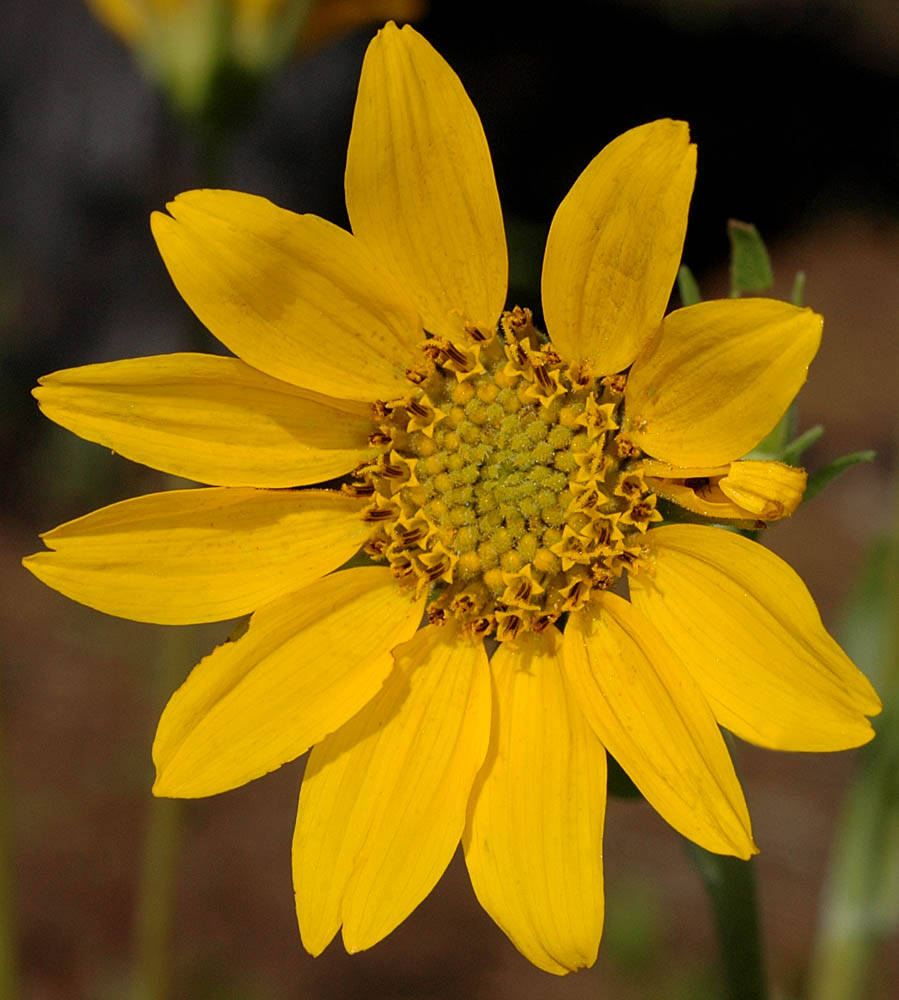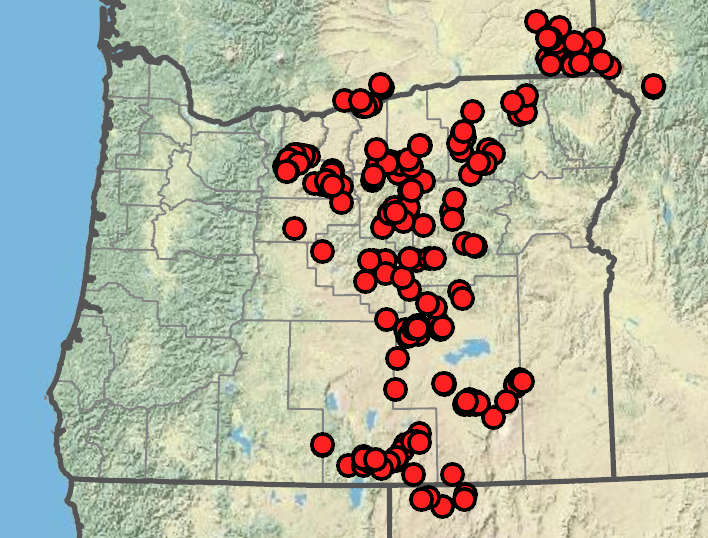Balsamorhiza serrata
Balsamorhiza careyana
serrate balsamroot
Carey's balsamroot
5–34 cm, sparsely villous-tomentose; from single taproot.
forming clumps, 23–62 cm, green, sparsely villous-hirsute; more densely so below heads.
ovate-lanceolate, undivided to pinnatifid, rarely with some leaves pinnately compound;
margins sharply serrate;
tips apiculate;
surfaces sparsely hispid;
basal leaves in 1–few rosettes;
blades 4.5–15 × 2–5.5 cm;
pinnae (when present) 4–11 mm wide;
petioles 1–9(13) cm, often one or more bract-like basal leaves present;
cauline leaves of 1 pair (when present); opposite;
blades 1–4(5.5) × 0.6–1.5 cm;
petioles 2–5.5(6.5) cm.
simple;
margins entire to slightly crenate;
surfaces hirsutulous to hirsute;
basal leaves in multiple rosettes;
blades deltate, 7–30 × 4.7–16 cm, bases cordate to hastate;
petioles 7.5–36 cm;
cauline proximal pair generally opposite, lanceolate;
distal alternate;
blades tapering at both ends, 2.5–8.2 × 0.4–2.8 cm;
petioles 0–7.5 cm.
with 1 terminal head.
with 1 larger; terminal head and 1–6 smaller; axillary heads;
peduncles 0–20.5 cm.
13–15 × 10–30 mm.
terminal 9–15 × 15–25 mm; axillary 9–13 × 6–12 mm.
8–21, yellow;
rays 13–24 × 4–9 mm.
8–20 on large heads, 5–9 on small heads, yellow, persistent after drying;
rays 18–26 × 5–11 mm.
~8 mm.
6.5–8.5 mm.
linear-lanceolate, 11–18 × 2–4 mm;
tips acuminate, sparsely to densely villous-tomentose.
ovate-lanceolate, 8–34 × 4–7 mm; outer often tapered to caudate or with acuminate tips, villous to tomentose.
6–7 × 1.5–2 mm, glabrous.
5.5–7.5 × 2–2.5 mm, generally strigillose, sometimes glabrous.
11–12 mm.
11–13 mm.
=38.
Balsamorhiza serrata
Balsamorhiza careyana
Dry open areas, serpentine. Flowering Apr–Jun. 600–2100 m. BR, BW, Col, ECas, Lava. CA, NV, WA. Native.
Balsamorhiza serrata is distinct among members of the genus Balsamorhiza in generally having simple leaves with serrate margins and tapered (not sagittate) bases. Some plants have pinnately divided leaves. Further work may show that these plants are actually hybrids between B. serrata and B. hookeri or B. hispidula. Balsamorhiza serrata is known to hybridize with B. sagittata.
Open areas, open pine woodlands. Flowering Apr–Jul. 0–1300 m. BW, Casc, Col, ECas, Lava. WA. Native.
Balsamorhiza careyana usually grows east of the Cascades but intergrades broadly with B. deltoidea in the Cascades and along the Columbia River. Pure B. careyana is easily distinguished by a combination of strigillose fruit, ray florets that are persistent after drying, and generally more heads per stem than B. deltoidea. Cascade specimens can be difficult to determine and have been separated as B. careyana var. intermedia in other treatments. The two species should perhaps be considered varieties of the same species.
Abigail (Abby) Moore
Abigail (Abby) Moore





